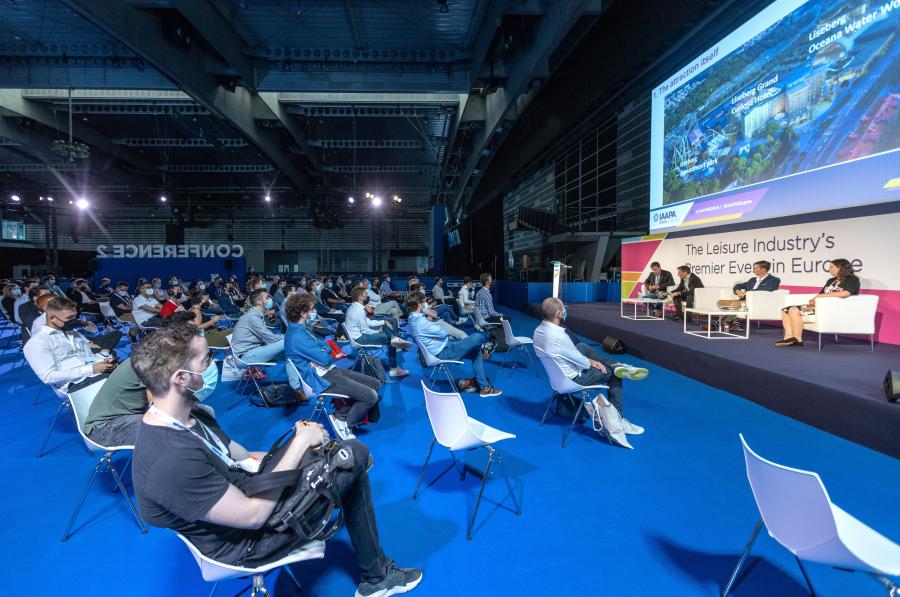BARCELONA, SPAIN, September 29—In order to appropriately address the topic of inclusion and diversity while actively driving positive change, a clear direction needs to emerge when using words like disability, accessibility, or inclusion.
That’s why Virginia Howington, founder and CEO of German-based CV Entertainment GbR laid a foundation in nomenclature in the IAAPA Expo Europe seminar, “Talking About Diversity and Inclusion.” By first defining important terms of the subject and then summing up the different types of disabilities, an attraction or supplier is best suited to move forward when building an inclusive culture.
“The dream of inclusion is that everyone is included, and if everyone is included it is normal to be different,” Howington stated. She pointed out that there are not only visible, but also invisible disabilities that attractions need to navigate. “We always have to keep that in mind that you should not make assumptions about a person just by their appearance,” she said.
Switching to the leisure industry in particular, Howington suggests that “inclusion doesn’t start at the attraction … you have to keep the entire visitor journey in mind.” Also, marketing materials—like an attraction’s website or social media content—should reflect the inclusive culture of an attraction or at a vendor's office. A process a company could consider using when designing inclusive attractions is the “accessibility journey” that starts by mapping out every step of the way to the ride (signage, entrance, station pathways, etc.), then figure out what inclusive measures are already in place and what issues still need to be addressed.
“Don’t Disable Your Company,” was the title of a presentation given by Karin Stiksma, owner of Dutch strategic leisure consulting agency Joint Projects. “There are so many ways in accessibility to continue to grow and prepare for the future,” she continued. She summarized her dream of “Leisure for all” in a video. “The sector is designed for ‘standard people,’” Stiksma said. “This won’t work in the long term. Recreation must be accessible for everyone,” her video explained. According to Stiksma, “change is urgently needed. This starts with connection and collaboration between all stakeholders in the leisure industry.”
“The potential is really big for companies, because about 50% of the world’s population has one or more kind of disabilities. We’re talking about 1.1 billion people in the world,” she pointed out.
But, how can an attraction start?
“Embed it in your strategies and translate it in your whole business operations,” Stiksma explained, showcasing several inclusive examples, like universally accessible attractions, and innovative technologies that attractions like Efteling in Kaatsheuvel, the Netherlands and Give Kids The World Village in Orlando, along with their suppliers like Zampera, have implemented. “Focus on the human instead of on the disability,” Stiksma said.
Next up was Thorsten Koebele, chief officer of sales and marketing at Mack Rides, who invited the audience to look at the issue of accessibility and inclusion from the perspective of a rides manufacturer. “I think it’s very important that the manufacturers and the operator get into that because at the end of the day, we are those who have to implement hit,” Thorsten shared. “We are all different, and that’s normal,” he stated, and proceeded to show some examples that highlighted the challenges has Mack Rides faced when designing accessible attractions as well as solutions and ride adaptations the company came up with and implemented successfully.
One noteworthy example was the use of a transfer track with a separate loading area that is visually concealed from the regular queue line, and thus, enables visitors with special needs to embark and disembark at their own pace and in a discrete fashion, without affecting ride capacity. As soon as they are ready and secured, the transfer track slides back in place for the ride to begin.

